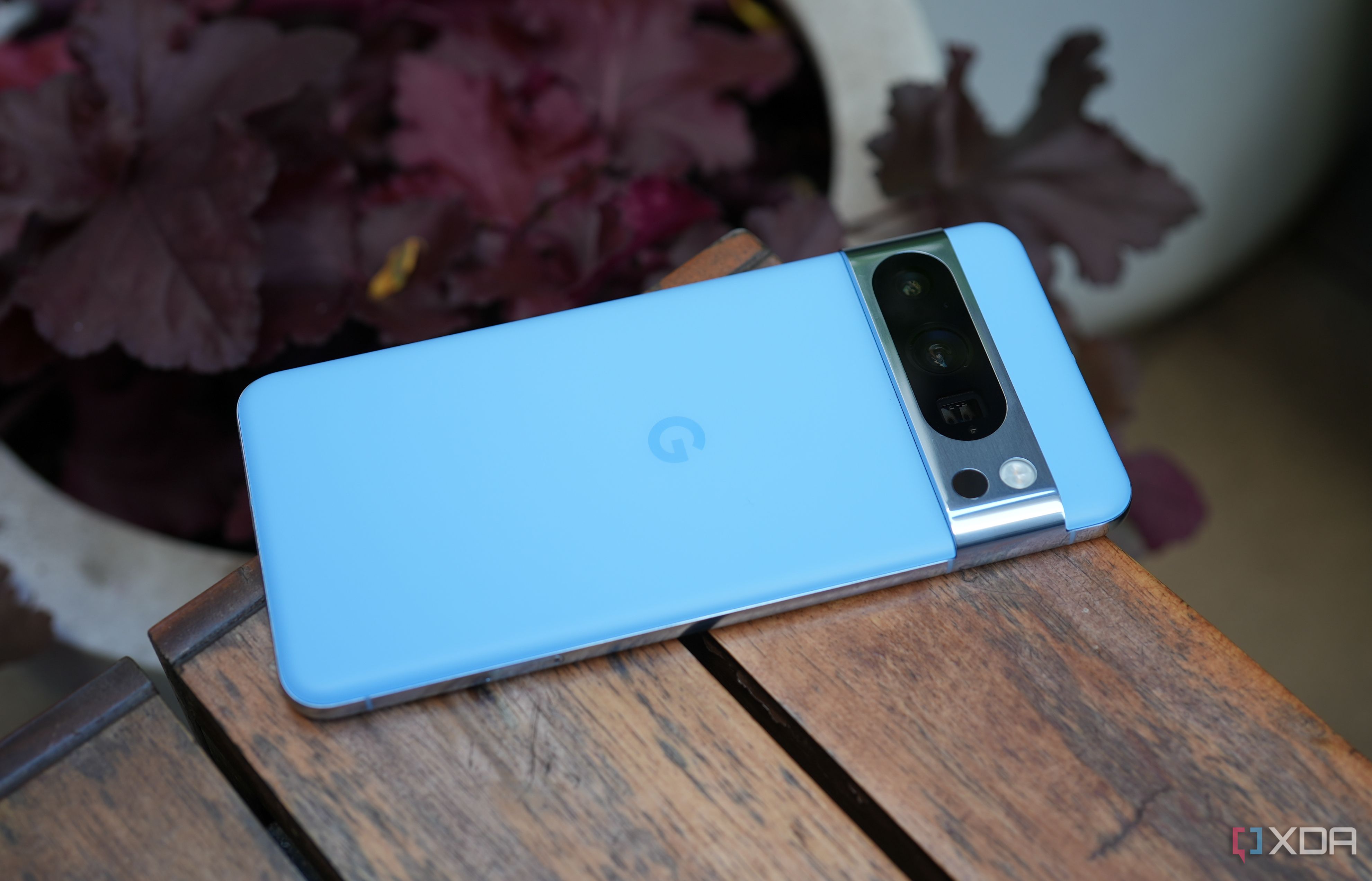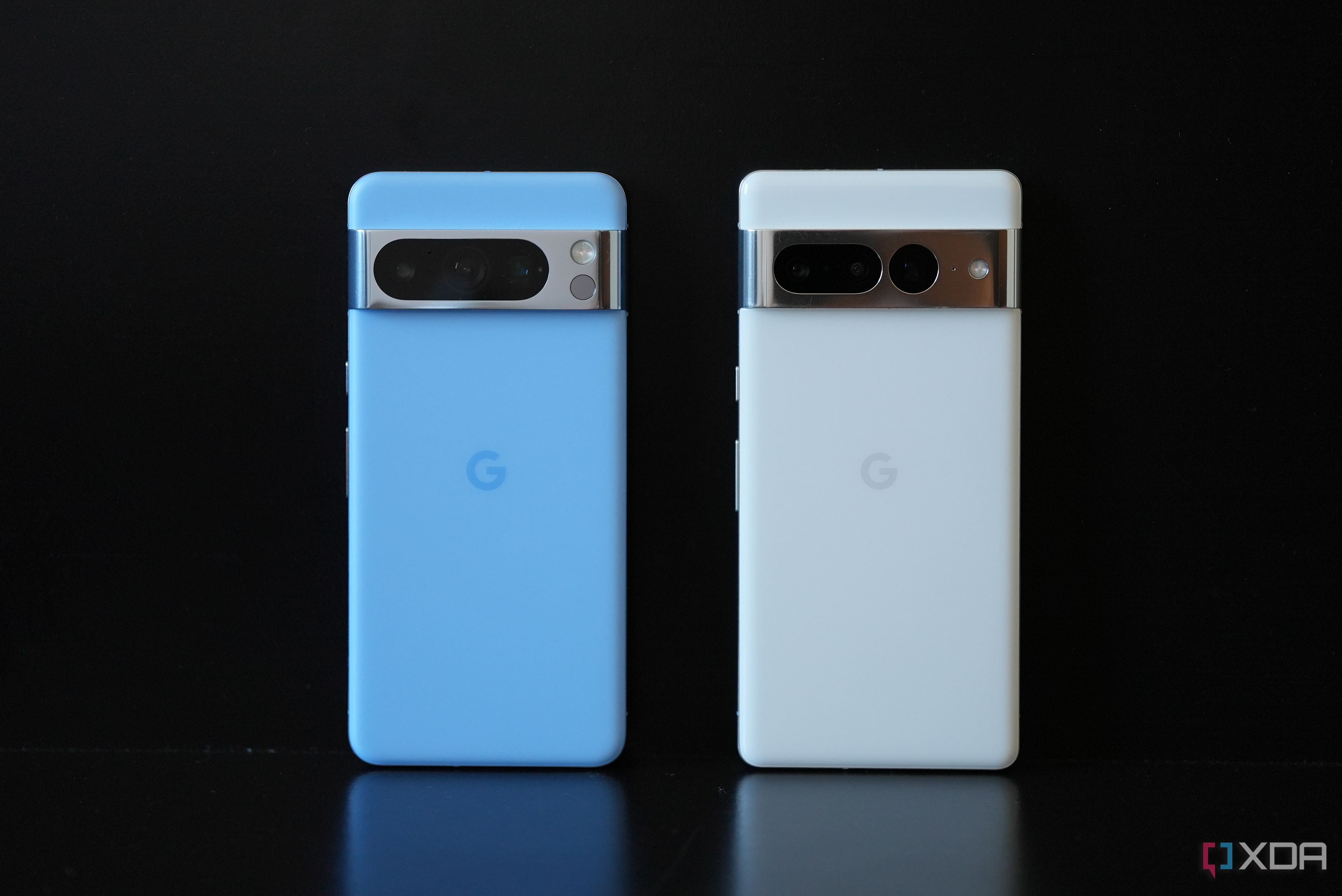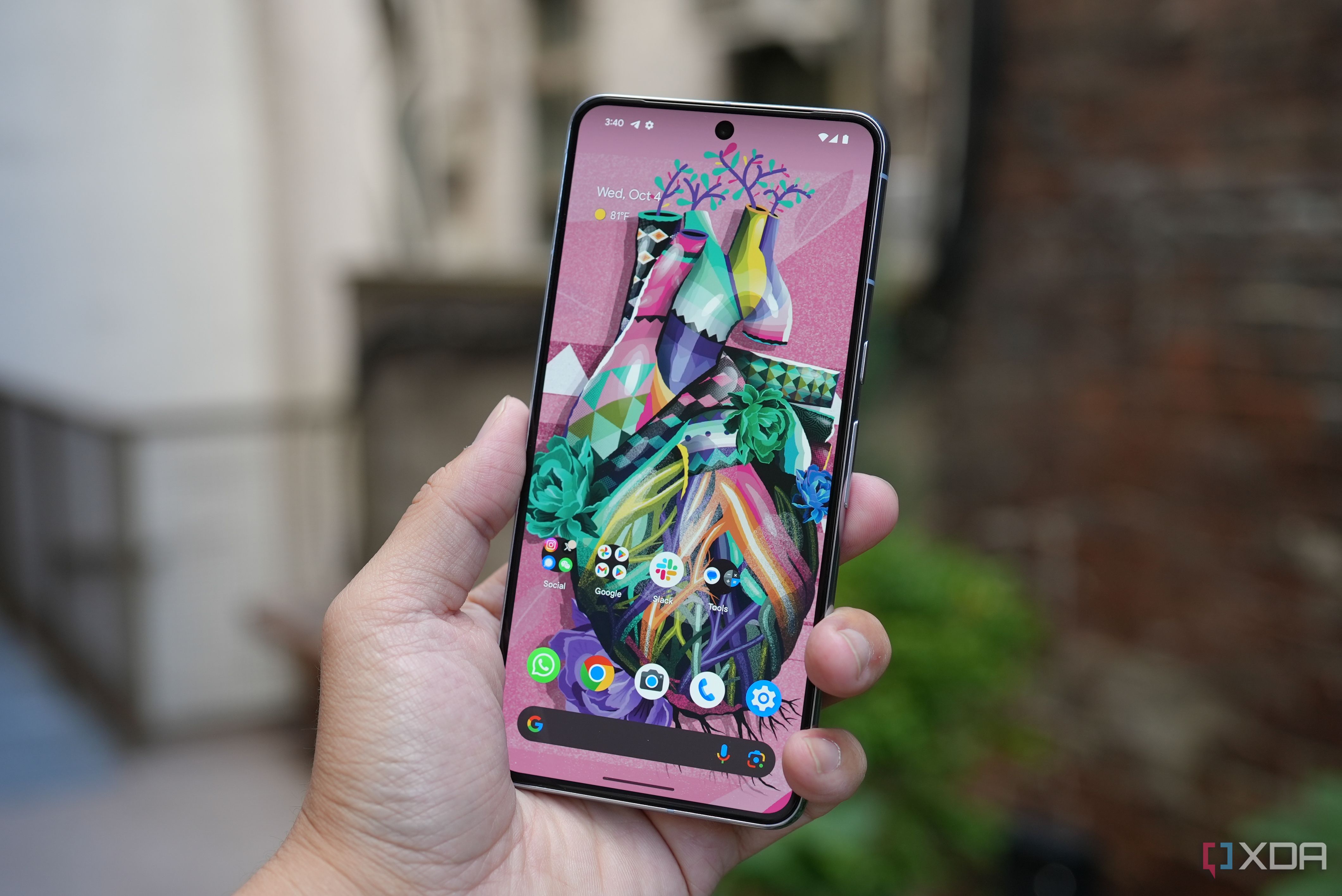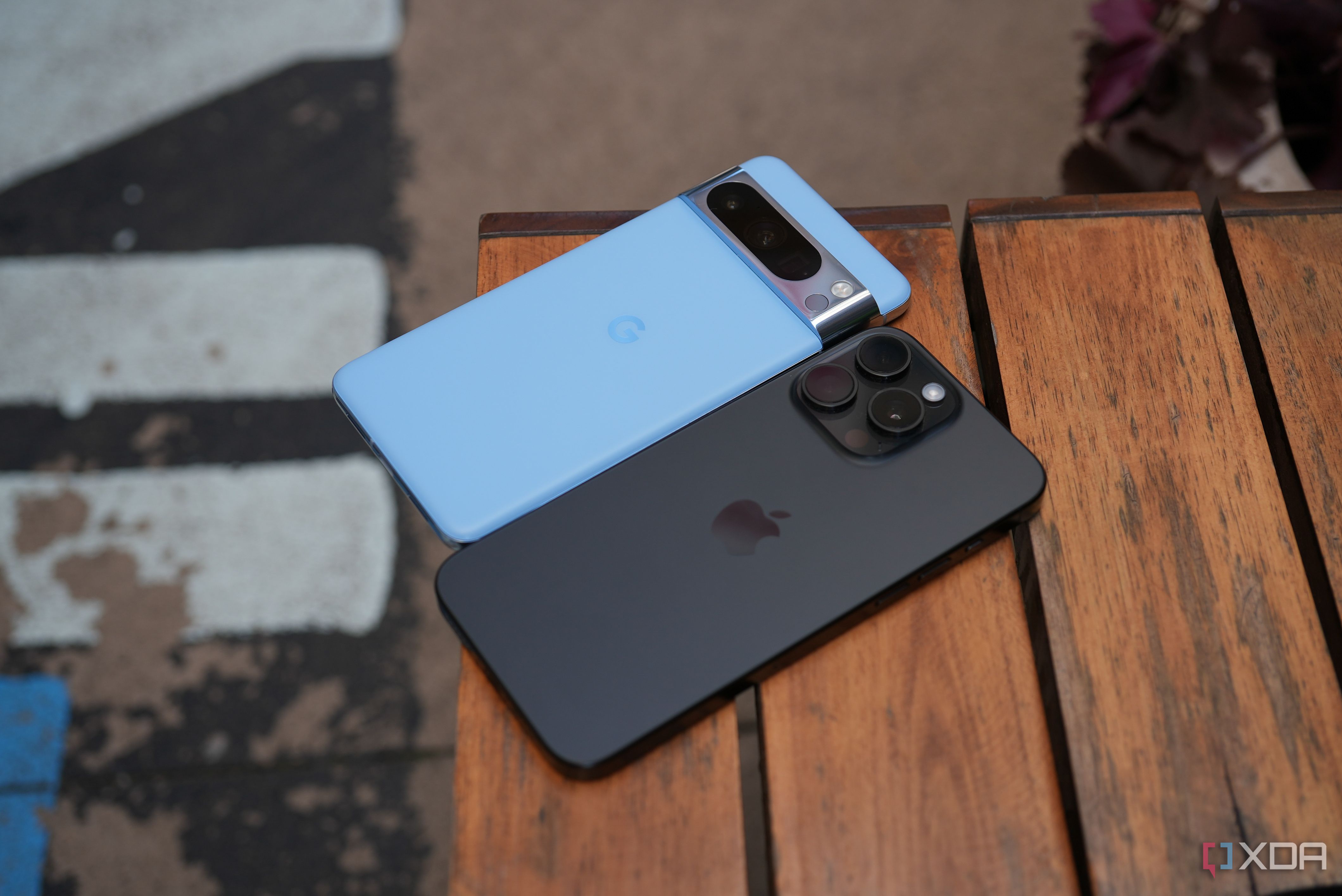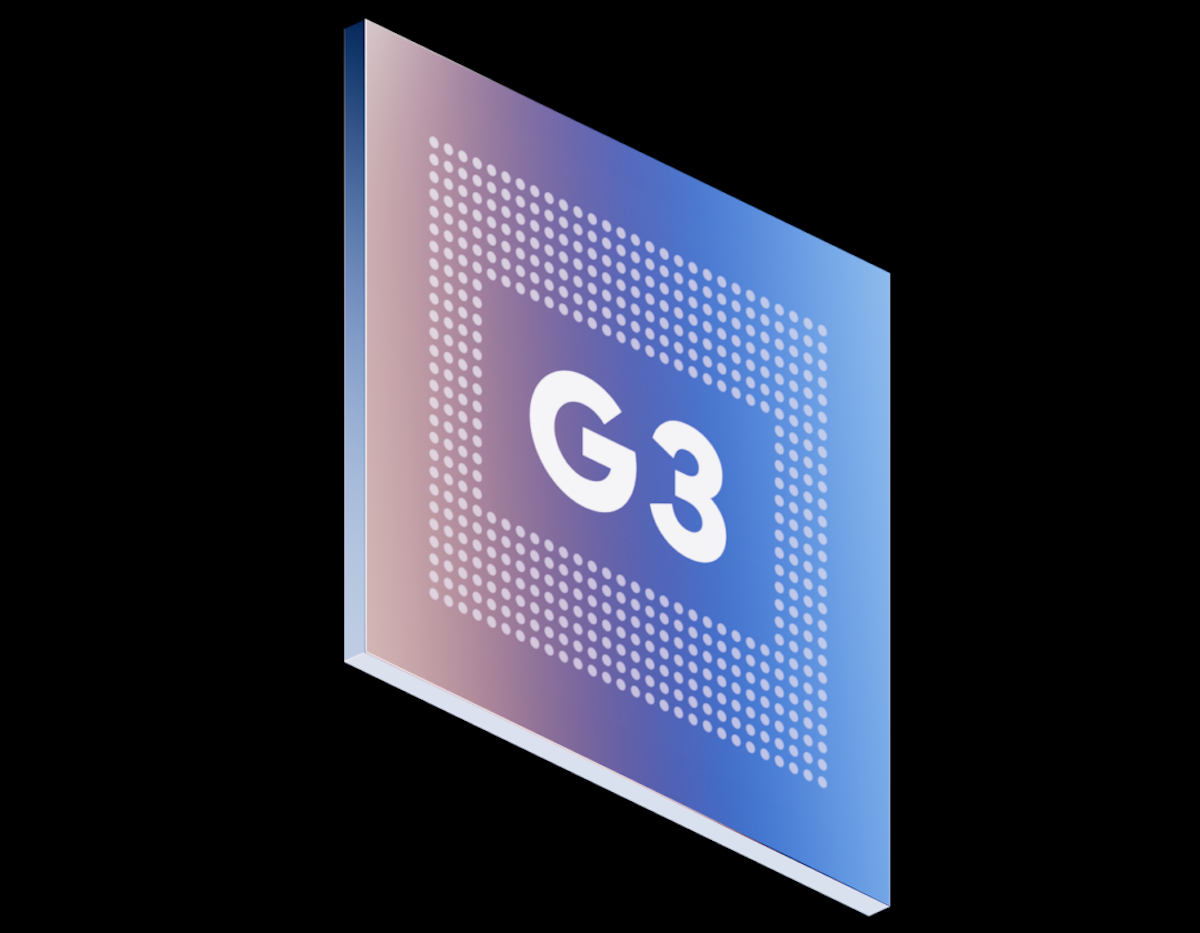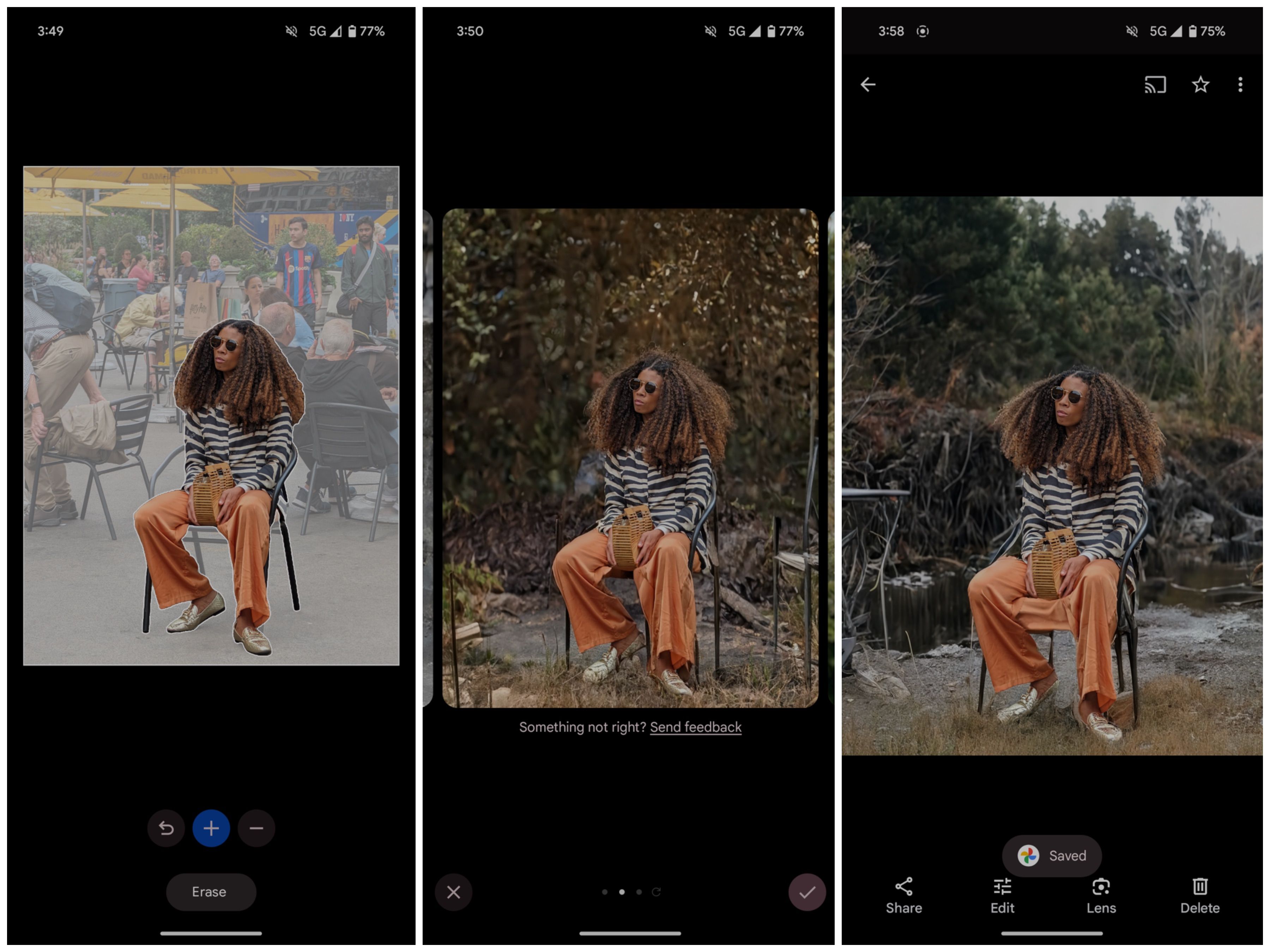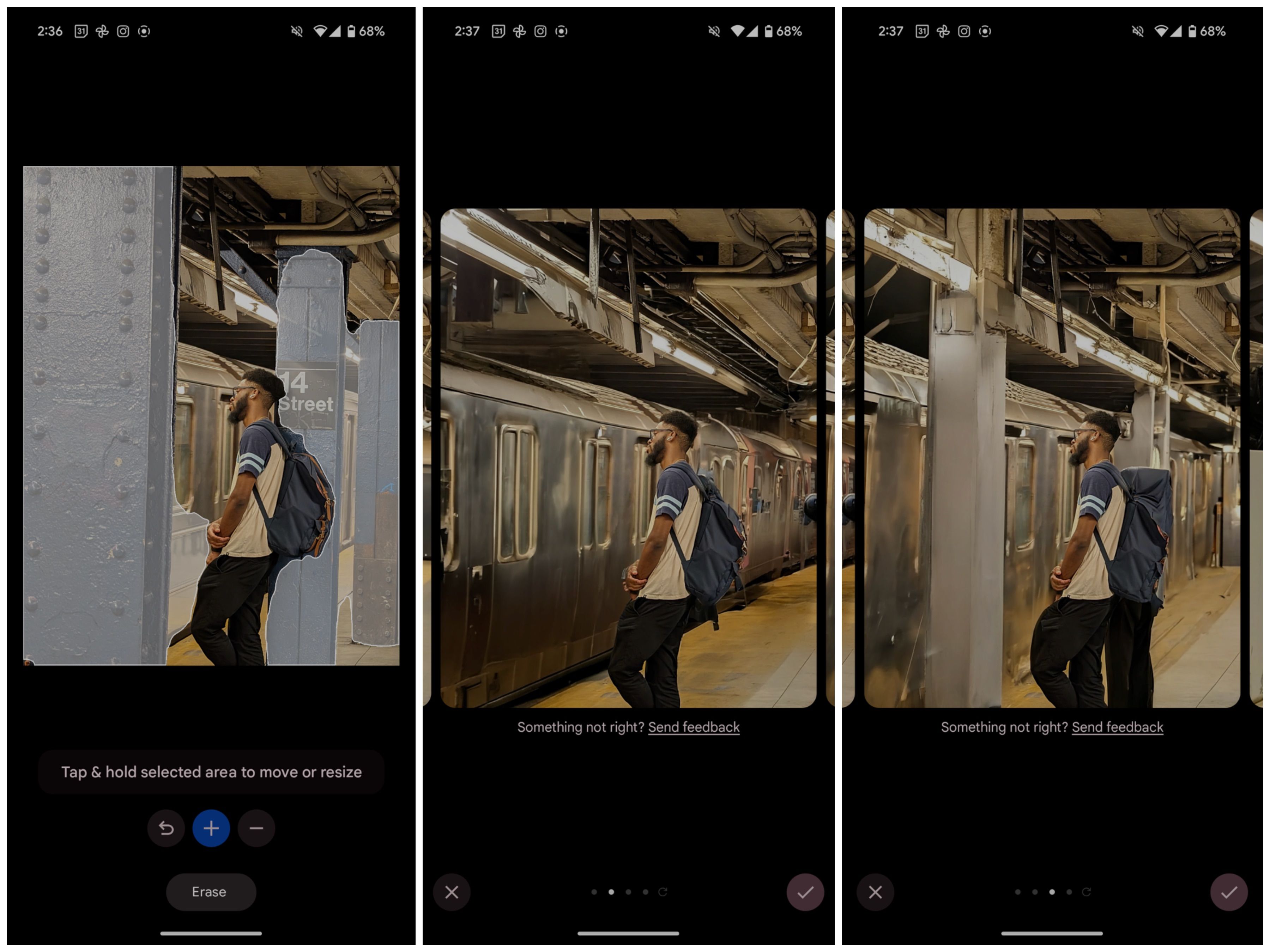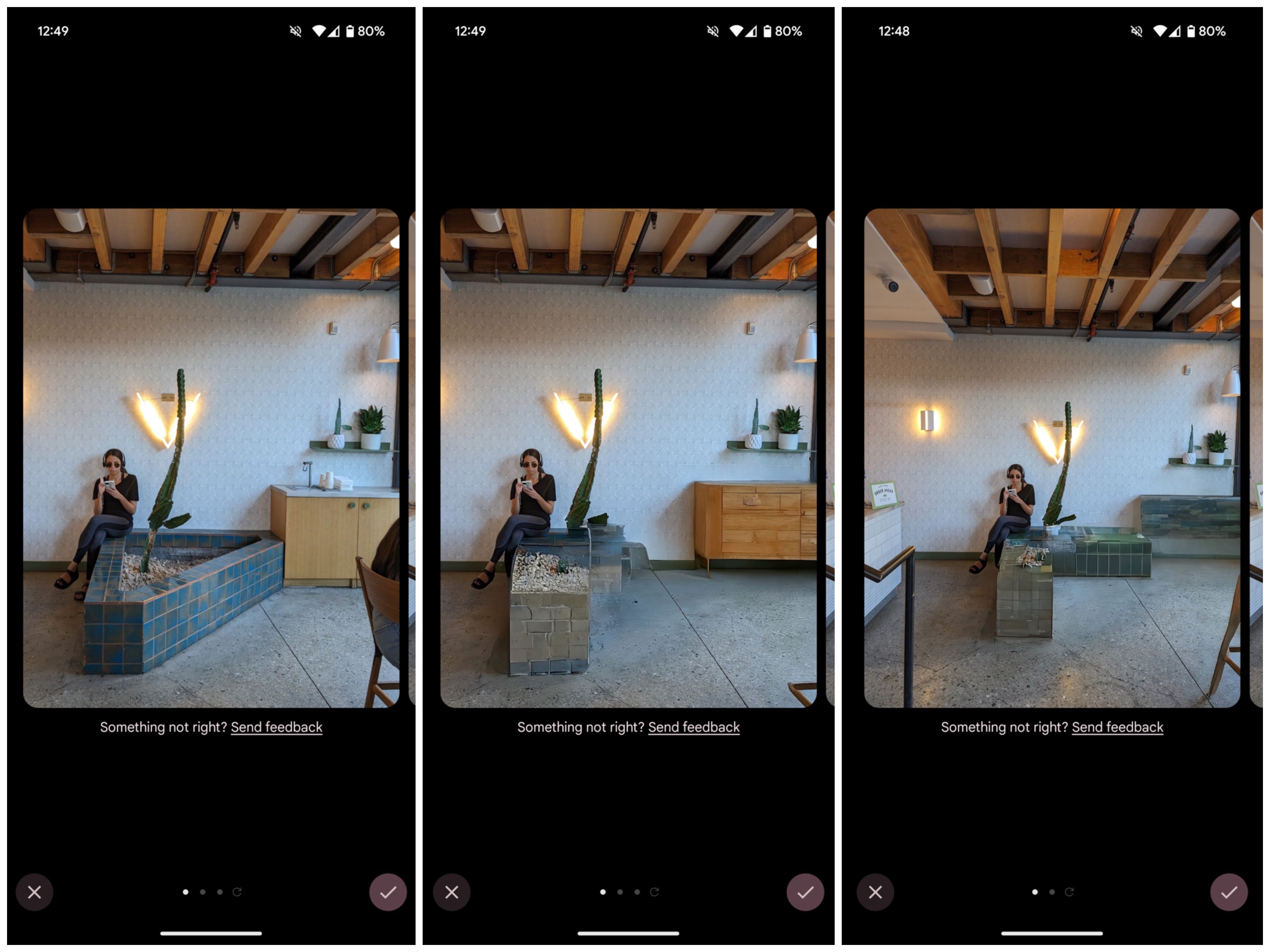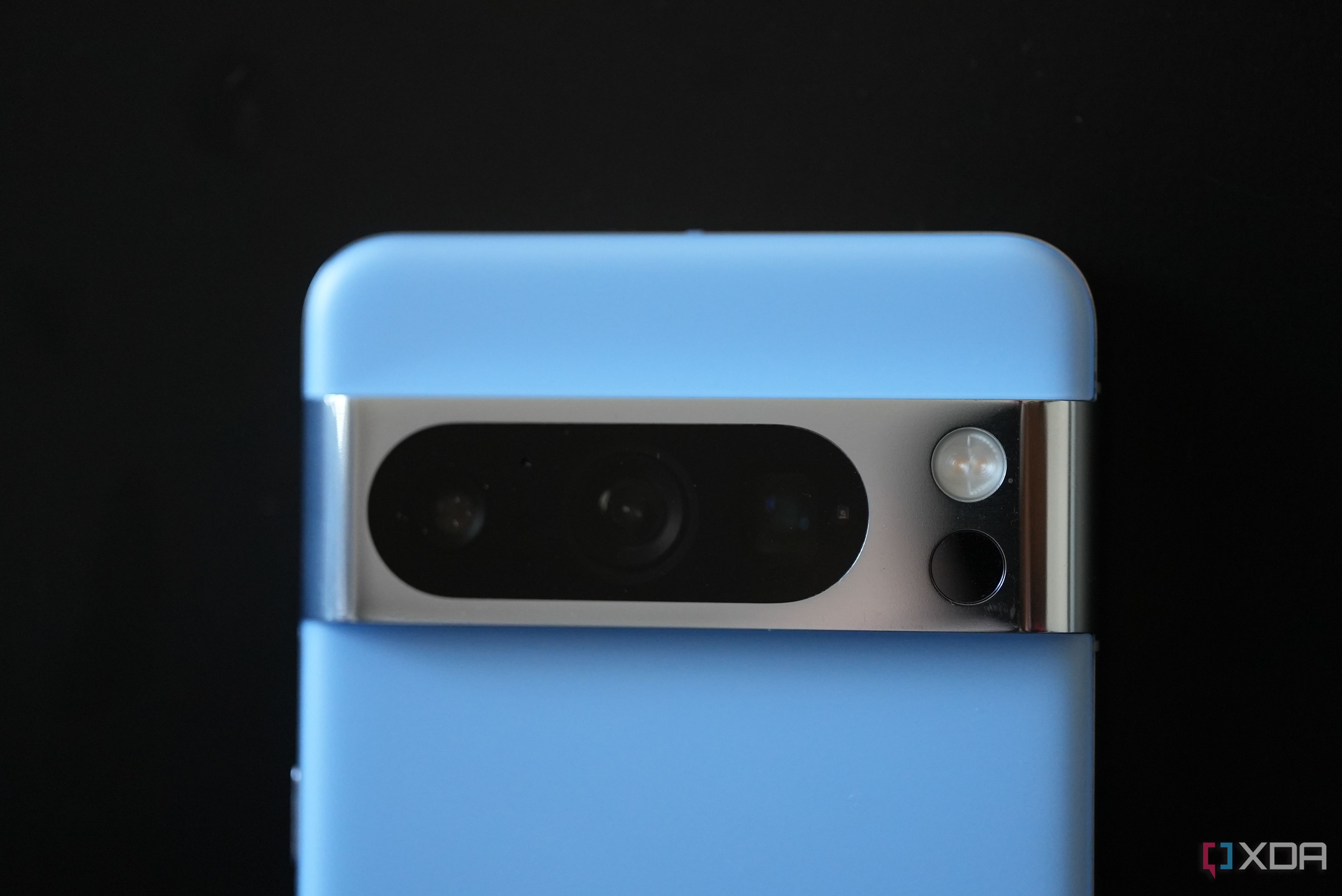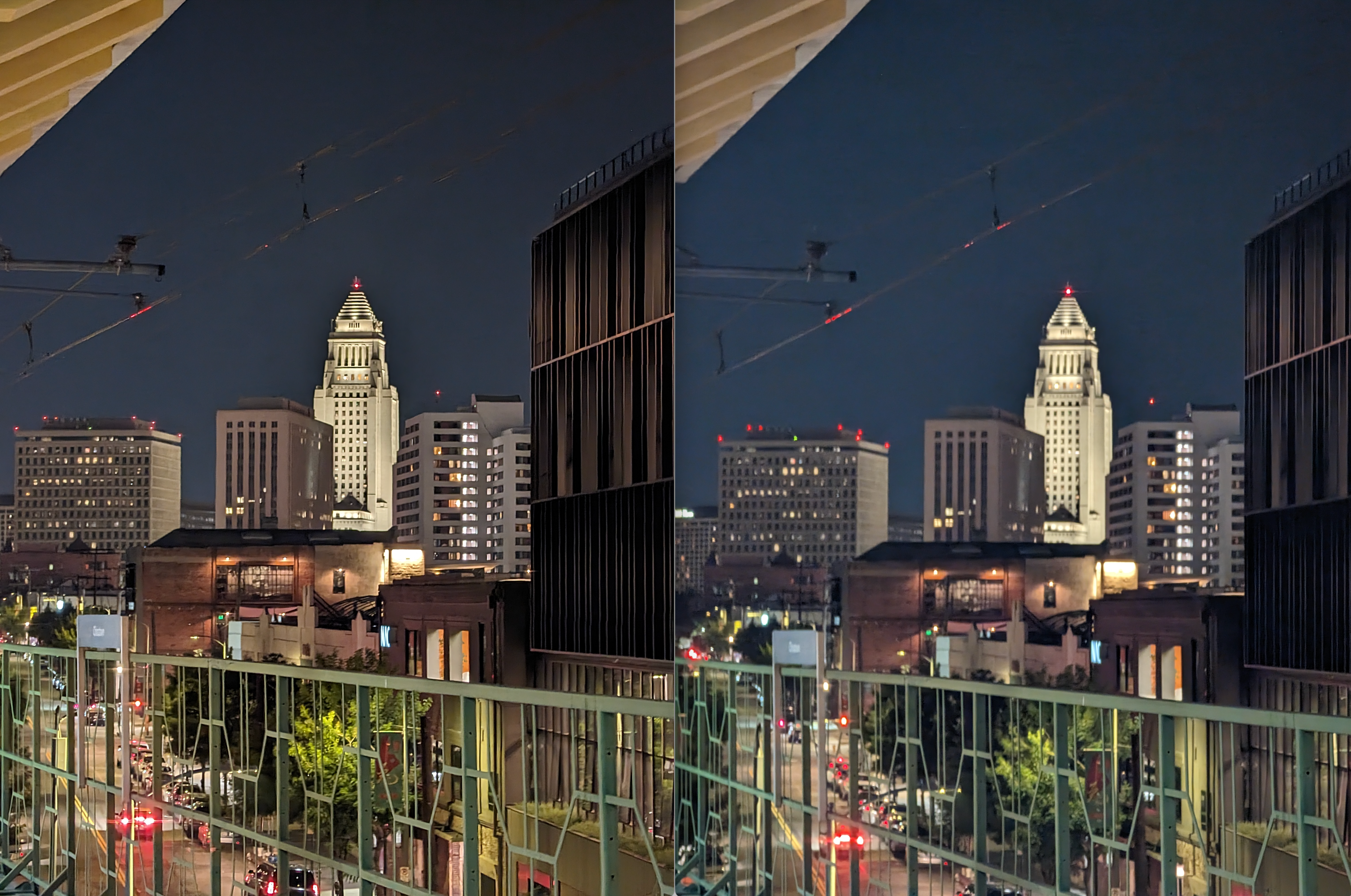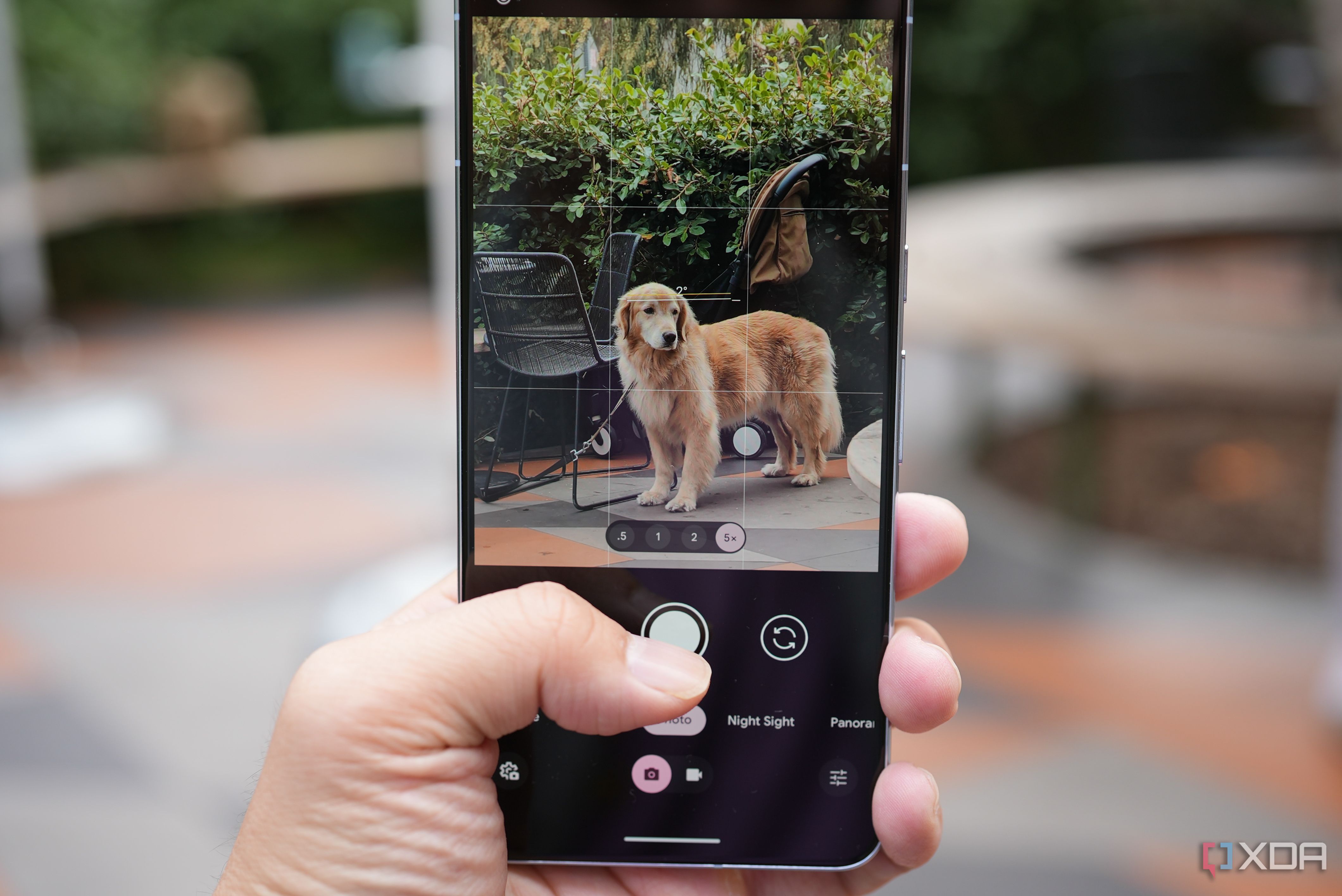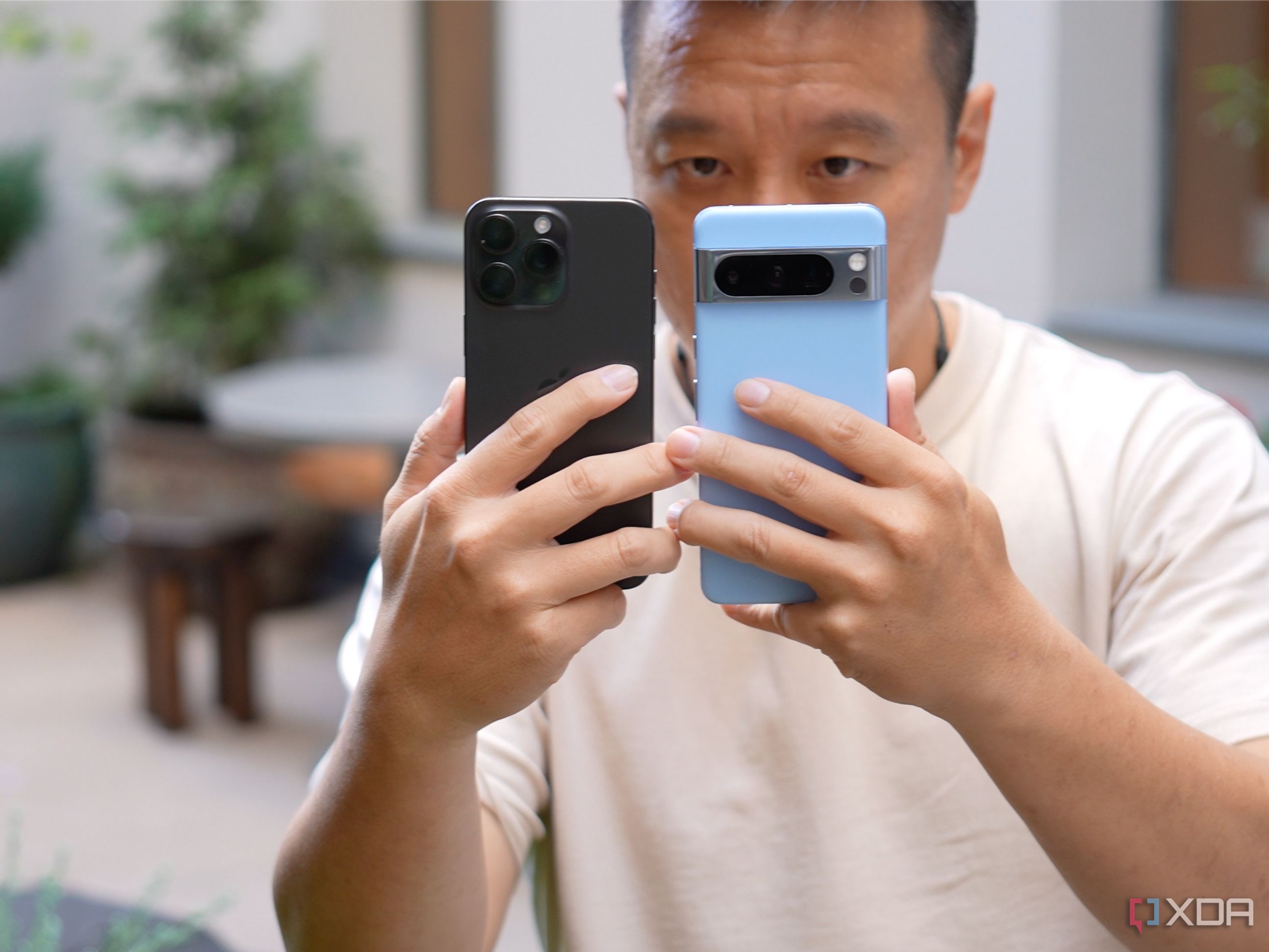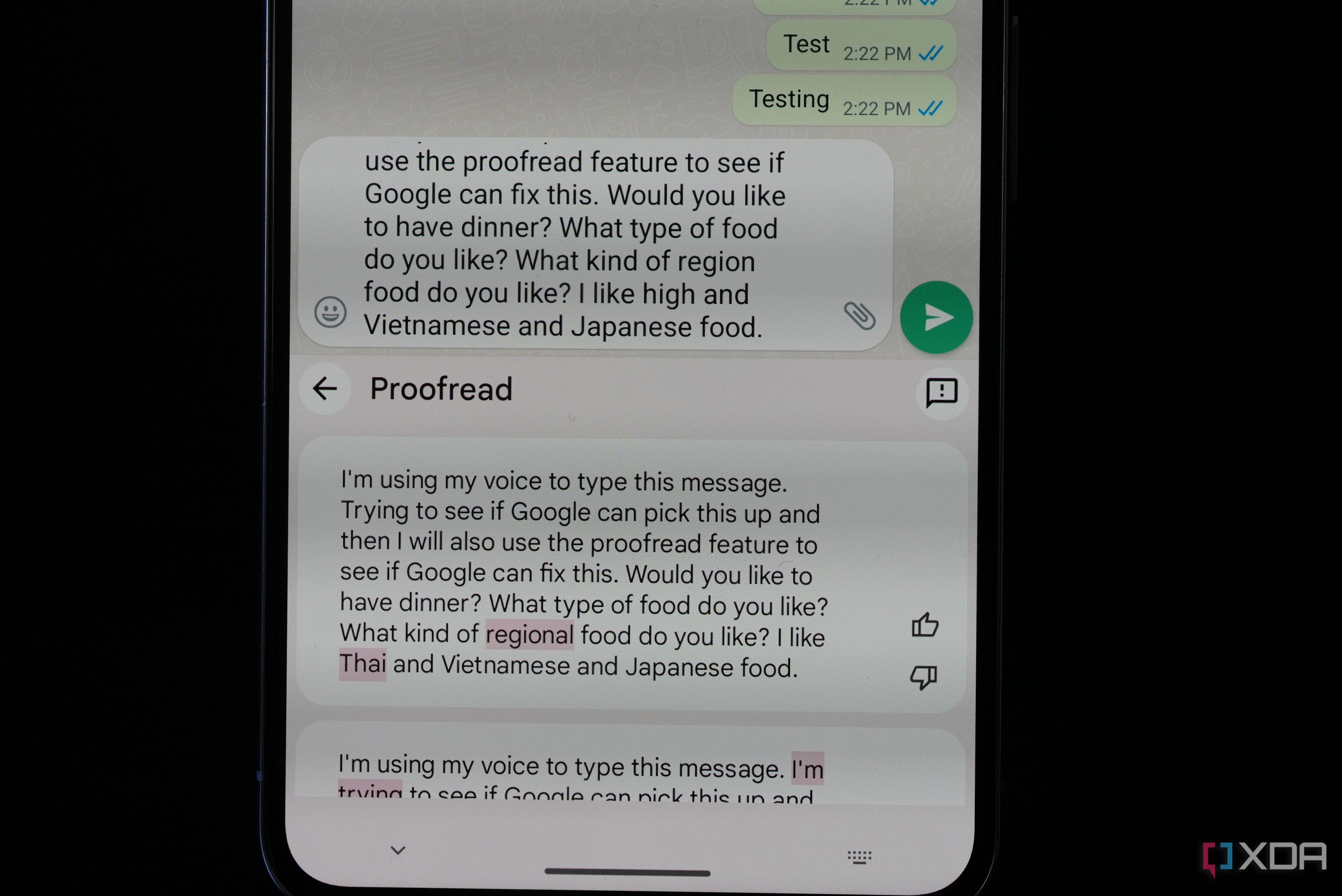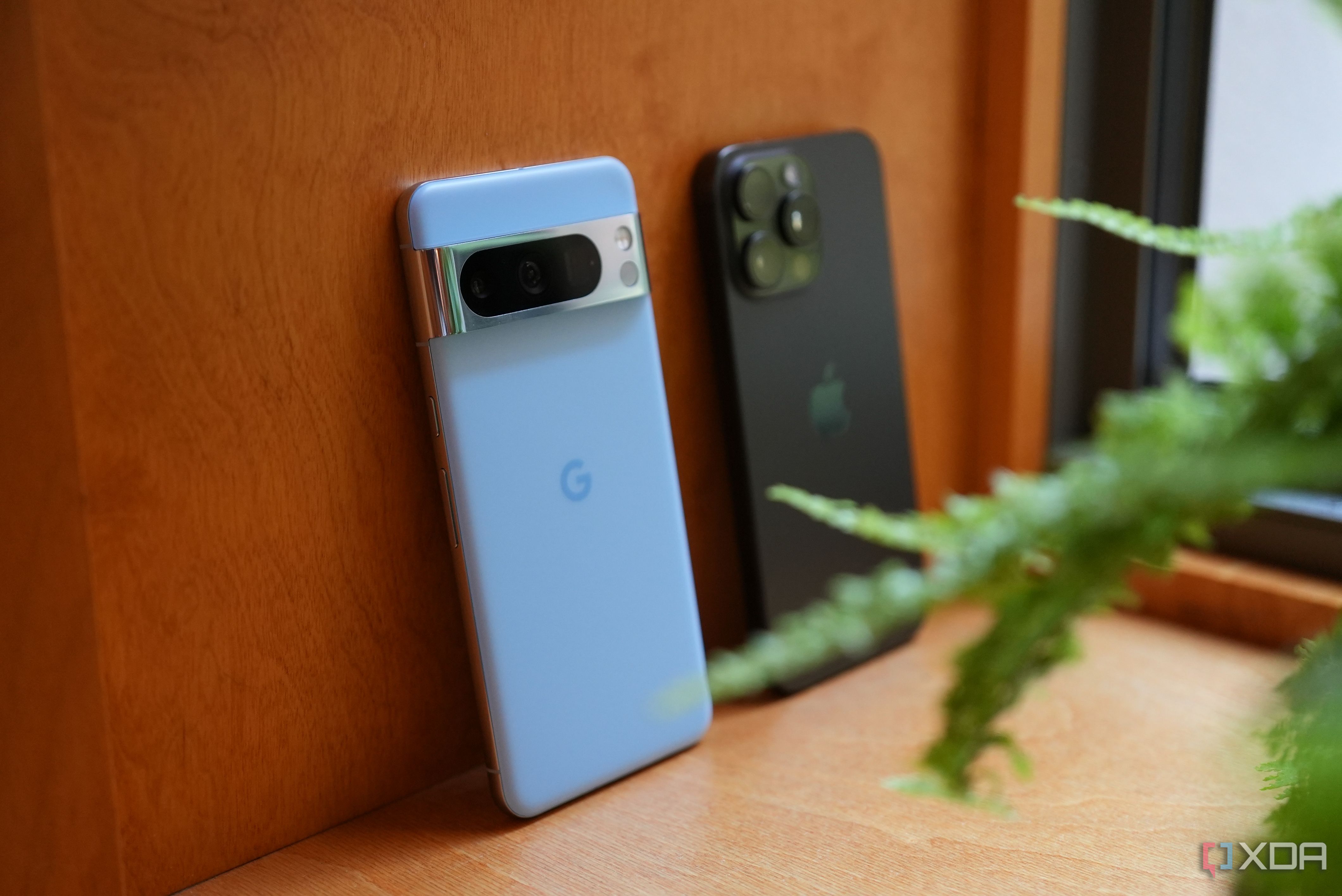Quick Links
It is beyond cliché at this point to say the appeal of a Google Pixel phone, and what separates it from other best phones on the market, is its software. But it's true more than ever this year. I don't think any single hardware component of the Google Pixel 8 Pro can be called the best or even top three in its category. The iPhone 15 Pro phones have thinner display bezels; Chinese Android flagship phones bring higher-tier camera hardware; Samsung's speakers and haptics are superior; and the upcoming Snapdragon 8 Gen 3 is likely going to beat the Tensor G3 in every conventional benchmark. I don't even think the Pixel 8 Pro produces noticeably better images than the Pixel 7 Pro cameras.
Yet I have uttered the word "wow" multiple times while testing the Pixel 8 Pro over the past week, and the reason I'm so impressed is indeed that Pixel software — specifically, the Pixel 8 series' on-device generative AI capabilities. Every day for the past week, I've spent at least 30 minutes just sitting on my bed, playing around with them.
And they're not a novelty. Generative AI is a major deal that has already disrupted industries and will continue to do so (I'm actually concerned my job may one day be at risk because of AI), and to have this technology on a smartphone feels like a sea change moment in mobile devices. Generative AI is at our fingertips with just a few taps, and the Pixel 8 series is pioneering the way.
About this review: Google provided XDA with a Pixel 8 Pro for testing and did not have input in this review.
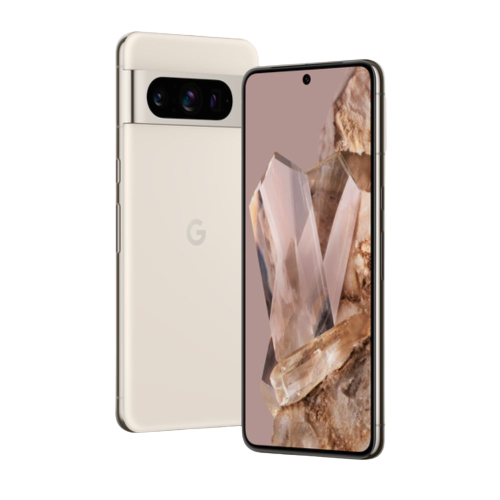

Google Pixel 8 Pro
The smartest smartphone gets smarter
On the surface, the Google Pixel 8 Pro is a very minor upgrade, and there's not much that sets it apart from the pack. But its new Tensor G3 chip is the first silicon to support Google's on-device machine learning algorithms, and it can do some truly jaw-dropping things.
- SoC
- Google Tensor G3
- Display
- 6.7-inch LTPO OLED (1344x2992) LTPO OLED, 1-120Hz, up to 2,400 nits peak brightness
- RAM
- 12GB LPDDR5X RAM
- Storage
- 128GB, 256GB, 512GB, 1TB UFS 3.1
- Battery
- 5,050mAh, fast wired & wireless charging
- Ports
- USB Type-C 3.2
- Operating System
- Android 14
- Front camera
- 10.5MP f/2.2 Dual PD
- Rear camera
- 50MP f/1.68 Octa PD wide camera, 48MP f/1.95 quad PD ultrawide with 125.5-degree FoV, 48MP f/2.8 quad PD telephoto camera with 5x optical zoom
- Dimensions
- 6.4x 3.0x0.35 inches (162.6x76.5x8.8mm)
- Colors
- Sky Blue, Porcelain White, Obsidian Black
- Weight
- 7.5 ounces (213g)
- Charge speed
- 27W wired, 23W wireless
- IP Rating
- IP68
- Price
- Starts at $999
- Micro SD card support
- No
- Generative AI capabilities, particularly for imaging, are scary good
- Absolutely one of the best camera systems around
- Comfortable to hold
- If you aren't using generative AI features, then it's not a big jump over Pixel 7 Pro
- The new flat screen results in sharp edges
- The phone isn't slow per se, but it's not fast either
Google Pixel 8 series: Pricing and availability
The Google Pixel 8 series includes both the Pro model and a smaller standard model. Both phones are available for purchase starting today in 21 markets, including the U.S., Canada, India, the U.K., and Japan. They're also available at every major carrier and retailer that sells electronics. The standard Pixel 8 starts at $699 while the Pixel 8 Pro starts at $999, both with 128GB of storage. There are also plenty of Pixel 8 deals that may include freebies to sweeten the purchase.
Hardware and design
Rounder corners, flatter screen, more efficient brain
The Google Pixel 8 Pro brings back the design language established with the Pixel 6 series and refined in the seventh generation. The phone's backside consists of mostly matte frosted glass made from Gorilla Glass Victus 2, with the visually striking aluminum visor housing a triple-lens camera system. Like last year, the camera visor blends seamlessly into the aluminum frame. but its glossy finish can attract fingerprints and smudges easily.
The corners have been given a stronger curvature when compared to the Pixel 7 Pro, and the camera visor bar got some slight design tweaks in which all three lenses are now housed in one cut-out. There's also a new sensor on the camera visor bar, a temperature scanner that does what its name says. Otherwise, the backside feels and looks similar to the 7 Pro, except for the new colors.
Flip the phone around, and the changes are more apparent. The Pixel 8 Pro goes with a completely flat OLED panel this year after using a curved screen on the last two Pixel Pros (and also like every other Android flagship from the last few years). I know many Western users prefer flat screens, so this will be considered an upgrade for many people. I personally prefer curved screens because they hide the side bezels a bit better, which makes for softer sides, so I like the Pixel 7 Pro better. The part where the Pixel 8 Pro screens meet the aluminum frame feels a bit pointy and sharp in my hands. But I concede that I'm in the minority, and most consumers will slap a case on it anyway (and there are lots of Pixel 8 Pro case options), so this change is overall a good one.
The Pixel 8 Pro's 6.7-inch screen actually uses a narrower and longer 20:9 aspect ratio compared to last year's 19.5:9, but because the screen is no longer curved, the overall width is about the same as last year.
By the way, Google has created a new marketing name for the screen this year: Super Actua Display. It basically just means it's an LTPO OLED panel with a variable refresh rate between 1-120Hz. Maximum brightness gets a welcome boost to 2,400 nits compared to last year's 1,500 nits. While the new rating actually still falls short of some other Android flagships on the market, it's more than bright enough for real-world use. Even in sprawling Los Angeles without much shade, the Pixel 8 Pro screen looked vivid and sharp at 2 p.m. This is a very good panel, even if the bezels are slightly thicker than the iPhone 15 Pro's.
Otherwise, the usual hardware components you'll find in a high-end flagship are all here: an optical in-display fingerprint scanner, stereo speakers, solid haptics, and IP68 water-and-dust resistance. The battery size is only 50mAh larger at 5,050 mAh, but wired charging is thankfully faster, now up to 30W. Construction is high-end, and the phone feels great in the hand (other than my nitpick of the sharp edges) with even weight distribution and clicky buttons.
Nothing I just ran off really stands out from other Android flagships on the market. In 2023, every flagship phone will have a great LTPO OLED screen and a premium in-hand feel. What sets the Pixel 8 Pro apart is, of course, the brain.
Internal hardware
Tensor G3 takes AI up a level
As mentioned, the Tensor G3 is the first mobile chip to run on-device generative AI, and it's also the first silicon to run the same speech-and-language model as Google's own data centers. Google says the Tensor G3, when running on-device generative AI, is "150 times more complex" than the most complex AI task in last year's Tensor G2.
I am not one to easily regurgitate company marketing claims, but I believe it here. For example, one of the more impressive AI features from the past two Pixel phones was Magic Eraser, which can remove unwanted objects from photos to varying degrees of success. On the Pixel 6 and 7 phones, Magic Eraser merely erases pixels from an image and then replaces them with similar pixels from the same photo. This means there's a limit to how much the phones can do to try to fix a picture. However, thanks to Tensor G3's generative AI abilities, Pixel 8 phones can now erase those pixels and then generate new ones in place.
But enough talk, let's show samples. Below is a collage of three images: The left is the original shot, and then I used the Pixel 8 Pro's new Magic Editor (located in the Google Photos app) to replace the background around my friend with a generated one. The process took about 45 seconds and happened entirely on the Pixel 8 Pro.
Here's another example: I snapped this shot of a man waiting for a train in the New York Subway. I wanted to remove the blue pillars, so Google's AI examined the photo, understood it was of a subway station, and then removed the pillars while filling in the space with created visuals of a train or, in another set, generated new pillars.
In another example, the Pixel 8 Pro removed the triangular seating area and then created a new platform where the woman was sitting.
Generative AI goes beyond just images. While the feature isn't ready until December, we will soon be able to tell our Pixel 8 phones to craft an entire email or paragraphs of words with a few prompts. They can also apparently help you craft social media captions. These things, of course, have been made popular via Bard and other AI applications in the past year, and a MacBook running third-party software can also create new visuals and text with a few prompts. But Google is offering all of this within the native Pixel photo gallery app on a small device that fits in our pocket. And the generative photo features work with older photos, too, as long as they've been backed up to Google Photos.
If you don't care about the AI stuff and just measure the Tensor G3 via conventional metrics like benchmarks, then the chip scores lower than the Snapdragon 8 Gen 2 and Apple's A17 Pro. But it no longer runs as hot, which is a huge improvement.
Cameras
Typical Pixel camera experience in both good and bad
Google says all three rear-facing cameras are using new sensors but would not specify what they are. The main camera, in particular, has been the source of some intrigue, with initial rumors suggesting Google may have upgraded to the ISOCELL GN2 sensor. But after my colleague Adam Conway did some investigating, we are both pretty confident that the sensor is not the GN2 but rather the GNV that was first used in the Vivo X80 Pro.
The GNV is a slightly upgraded version of the GN1, with the same 1/1.3-inch sensor size but paired with a faster f/1.7 aperture. The ultrawide cameras and periscope zoom lenses are both 48MP shooters that have faster apertures, which improves light intake ability. These camera hardware upgrades are satisfactory in the U.S. phone scene but just modest compared to the best Chinese phones, which all use newer and larger image sensors across every lens.
But with Pixel cameras, it's about software as much as hardware. I already mentioned some of its generative AI tricks earlier, but even without them, the Pixel 8 Pro churns out great-looking shots. They look like other Pixel shots, meaning the colors pop and HDR is always on point, but there's a lot of processing, so the details are not the sharpest or most organic if you pixel peep.
And this year, the Pixel 8 Pro's shutter feels a beat slow, probably because the phone is doing so much computational work. The shutter speed is not terrible or unacceptable by any means, but the iPhone 15 Pro's shutters are noticeably faster. Of course, if the shot doesn't turn out right, I can always use software to remove elements, resize subjects, or add a new background. Below are some of my favorite shots snapped by the Pixel 8 Pro main camera (unedited, no generative AI trickery).
As great as the main camera is, I enjoyed shooting with the 5x periscope lens even more. 120mm is closer to a portrait or street photography lens, and it results in stronger background compression, more bokeh, and just tells a more specific story than the slightly too wide main camera's 24mm framing. Below are 5x shots, and you can see they benefit from the faster aperture in low-light conditions.
The ultrawide camera is good, too, with Google's software keeping noise to a minimum, even in low light conditions.
We can see the Pixel 8 Pro also does a superb job keeping color science and exposure consistent across all three lenses.
So the Pixel cameras are great, but many phone cameras are. Against the iPhone 15 Pro Max, I generally prefer the iPhone's colors over the Pixel's. The iPhone cameras this year do a good job of developing their own mood with deeper shadows.
But when I zoom in and pixel peep, the Pixel's photos are sharper and less noisy.
Against the Galaxy S23 Ultra, the Pixel 8 Pro is flat out the better camera system. The Pixel handles exposure more accurately than Samsung's, with more pleasing color reproduction. Even the 10X zoom, which you think would be an easy win for Samsung given the S23 Ultra has a dedicated 10X camera, is very close.
When going against last year's Pixel 7 Pro, the new Pixel's zoom lens is clearly superior, producing sharper and more vivid images, but the main camera is too close to call. Still, factoring in the new features like generative AI editing, the Pixel 8 Pro camera system is clearly more polished and a step ahead.
Video performance of the Pixel 8 Pro is good but not amazing by my super high standards. Stabilization with the main camera is good, but when shooting with the 5x zoom lens and walking, there are more bouncy jitters than 5x footage captured by the new iPhone or Xiaomi 13 Ultra.
There is a new AI-driven feature named Audio Magic Eraser that can remove background noise from videos, and it works quite well. In the sample clip below, you can see the Pixel 8 Pro could identify the sound in the footage and remove the police sirens in the back.
Software and general performance
Better thermals, smart features galore
The Pixel 8 Pro ships with Android 14, and with Google's new promises of seven years of updates, this phone will get support all the way to Android 21. Android 14 isn't a major visual overhaul, so the UI will look familiar to most Pixel users. New features include smarter font scaling, more live wallpapers, and the ability to place widgets on the lockscreen.
I'm actually not the biggest fan of Pixel Launcher, and most of my gripes are still here, like the fact that the Pixel 8 Pro still can only multitask in split-screen mode, not a floating window mode. I still dislike that there are two unremovable widgets on the homescreen taking up space, but I need to accept that is just how things are going to be. Google is clearly making the Pixel experience similar to the iPhone experience, so expect a lot of elements you won't be able to change.
It's fine, though, because Google's phone keeps getting smarter. For example, a few days ago, I received a call from an unknown number. Thinking it was spam, I did not pick up. But the Pixel 8 Pro used its Call Screen feature to answer the call, speak to the caller using Google Assistant's natural human voice, and asked the caller to describe what he wanted, after which the Google Assistant transcribed what the caller said. Turns out, it was a semi-important call — I had forgotten to lock my storage door. So Google's Call Screen saved me there. On any other phone, I would have just ignored the call completely.
Google's AI will also now be able to proofread text you've typed and offer fixes for more than just basic spelling. In the below image, you can see the Pixel 8 Pro was able to identify that I meant "Thai" food instead of "High" food and suggest a fix. Between this and its already excellent voice dictation, this is a phone that can save me from typing.
Battery life on the Pixel 8 Pro has been pretty good unless I'm actively playing with AI features. During normal use cases, the phone got up to a full 13-hour day with 5-6 hours of on-screen time. But when I play with Magic Editor, the battery drops 15-20% per hour.
And yes, the back of the phone does get warm when running generative AI, too. Using the Pixel 8 Pro's new temperature scanner on a Pixel 8 running Magic Editor, the Pixel 8 varied between 88-92 degrees Fahrenheit. The good news is that it's about as hot as the phone gets, and when I'm not using intensive AI, the phone stays much cooler. The Pixel 8 Pro also made it through a 20-minute Extreme Stress Test in 3D Mark, which many 2022 Snapdragon 8 Gen 1 Android phones could not.
Tensor G3 still isn't the fastest phone around, as trimming a video length still requires waiting seconds (the process is immediate on an iPhone). And I've seen a couple of bugs, like YouTube randomly crashing.
Should you buy the Google Pixel 8 Pro?
You should buy the Google Pixel 8 Pro if:
- You want the smartest smartphone with the most proactive features
- You want to dabble in generative AI on your mobile device
- You take a lot of photos and want a phone with one of the very best cameras
You should not buy the Google Pixel 8 Pro if:
- You already own the Pixel 7 Pro and have no interest in the new AI features
- You want to save a bit of money and don't care for the zoom lens — the Pixel 8 is a better option if so
I haven't always been the biggest fan of the Pixel series. I thought the first several Pixels were bland, overrated, and inferior to the best Asian Android phones. But in the past three years, beginning with the Pixel 6, Google has built an identity and a vision, and now it produces one of the best phones around. With Samsung phones still on cruise control, the Pixel 8 Pro will have a lot of appeal for Android fans in North America.
I absolutely loved my time with the Pixel 8 Pro and its reliable cameras and generative AI features, and it has earned a permanent place in my tight phone rotation of around four units. Its $999 pricing could be considered high for the average consumer, but the standard Pixel 8 brings a lot of flagship features at a more manageable price. This year's Pixels really knocked it out of the park.


Google Pixel 8 Pro
On the surface, the Google Pixel 8 Pro is a very minor upgrade, and there's not much that sets it apart from the pack. But its new Tensor G3 chip is the first silicon to support Google's on-device machine learning algorithms, and it can do some truly jaw-dropping things.

